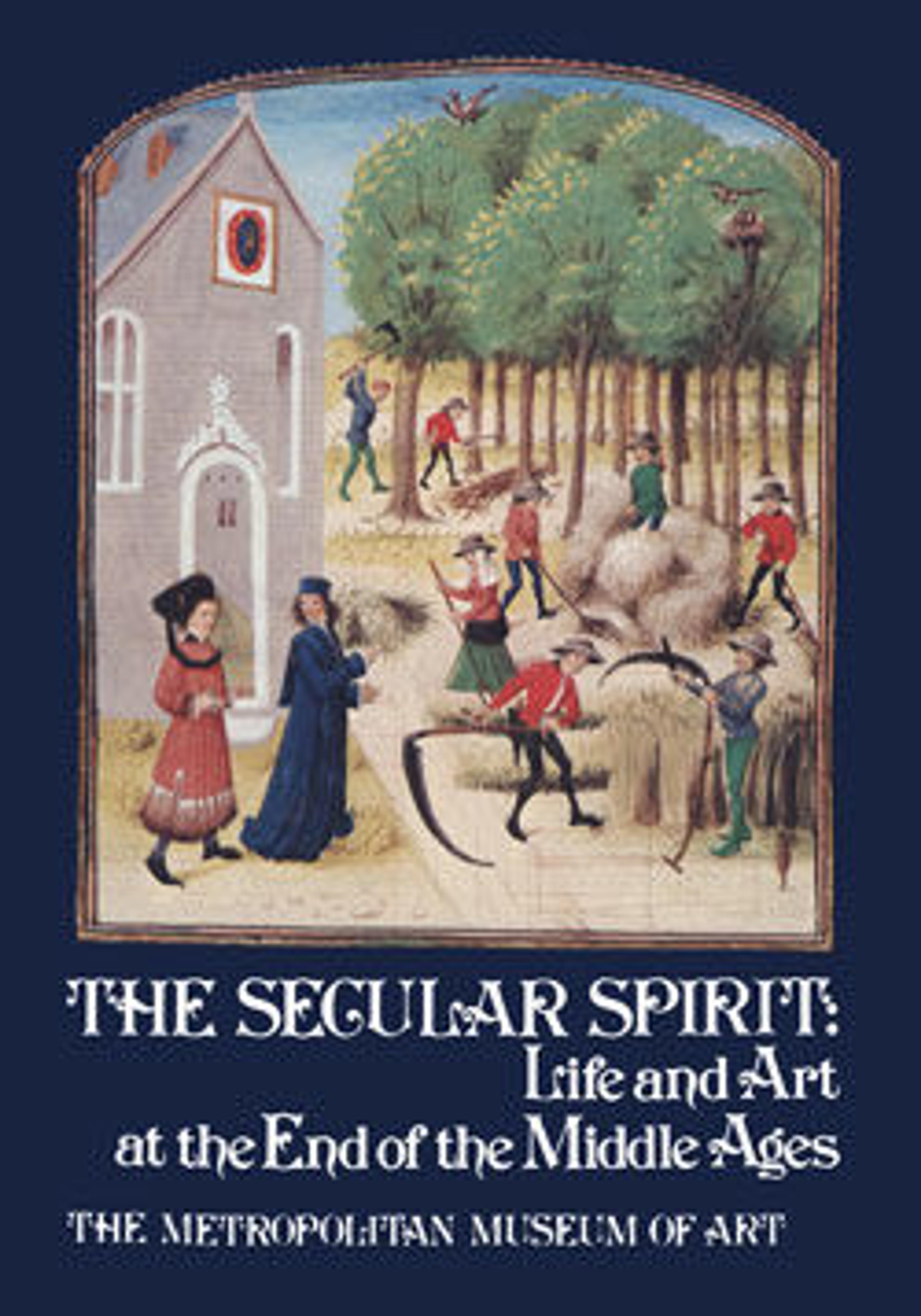Spit Bracket
Although Spanish, particularly Catalan, iron working had reached a level of great artistry by the late Middle Ages, many ordinary household objects continued to be wrought in the traditional and less refined fashion, as is the case with this support for a spit (once part of a pair). It is amusing, however, and its maker demonstrated great inventiveness in transforming the scaly fins of its arched back into rings through which the spit could be inserted at gradual intervals.
If contemporary illustrations accurately reflect the normal operation of the roasting spit, it was the fate of some poor knave to sit by the fire, endlessly turning the spit, which was sometimes provided with a handle. By the fifteenth century, a number of more sophisticated mechanical devices had been devised. These included a series of disks set at an angle about the fire and driven in a circle by its heat, which, in turn, transmitted the rotary motion, through a series of cogged wheels, to the spit. This new “technology” did not, however, displace the traditional method of turning the spit by hand.
If contemporary illustrations accurately reflect the normal operation of the roasting spit, it was the fate of some poor knave to sit by the fire, endlessly turning the spit, which was sometimes provided with a handle. By the fifteenth century, a number of more sophisticated mechanical devices had been devised. These included a series of disks set at an angle about the fire and driven in a circle by its heat, which, in turn, transmitted the rotary motion, through a series of cogged wheels, to the spit. This new “technology” did not, however, displace the traditional method of turning the spit by hand.
Artwork Details
- Title:Spit Bracket
- Date:16th century
- Culture:Spanish (?)
- Medium:Iron
- Dimensions:Overall: 15 3/4 x 10 x 18 in. (40 x 25.4 x 45.7 cm)
- Classification:Metalwork-Iron
- Credit Line:The Cloisters Collection, 1958
- Object Number:58.174.1
- Curatorial Department: Medieval Art and The Cloisters
More Artwork
Research Resources
The Met provides unparalleled resources for research and welcomes an international community of students and scholars. The Met's Open Access API is where creators and researchers can connect to the The Met collection. Open Access data and public domain images are available for unrestricted commercial and noncommercial use without permission or fee.
To request images under copyright and other restrictions, please use this Image Request form.
Feedback
We continue to research and examine historical and cultural context for objects in The Met collection. If you have comments or questions about this object record, please contact us using the form below. The Museum looks forward to receiving your comments.
